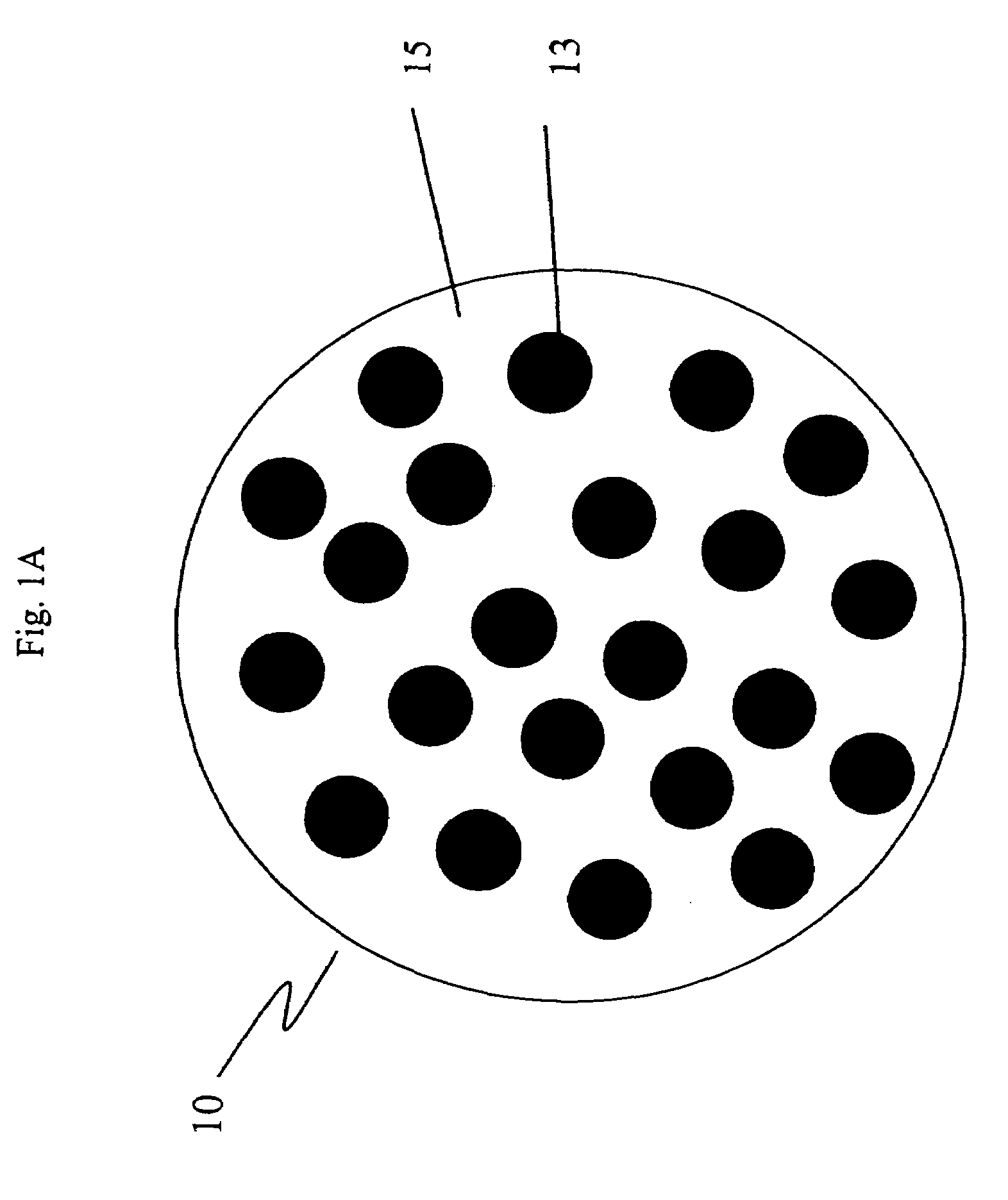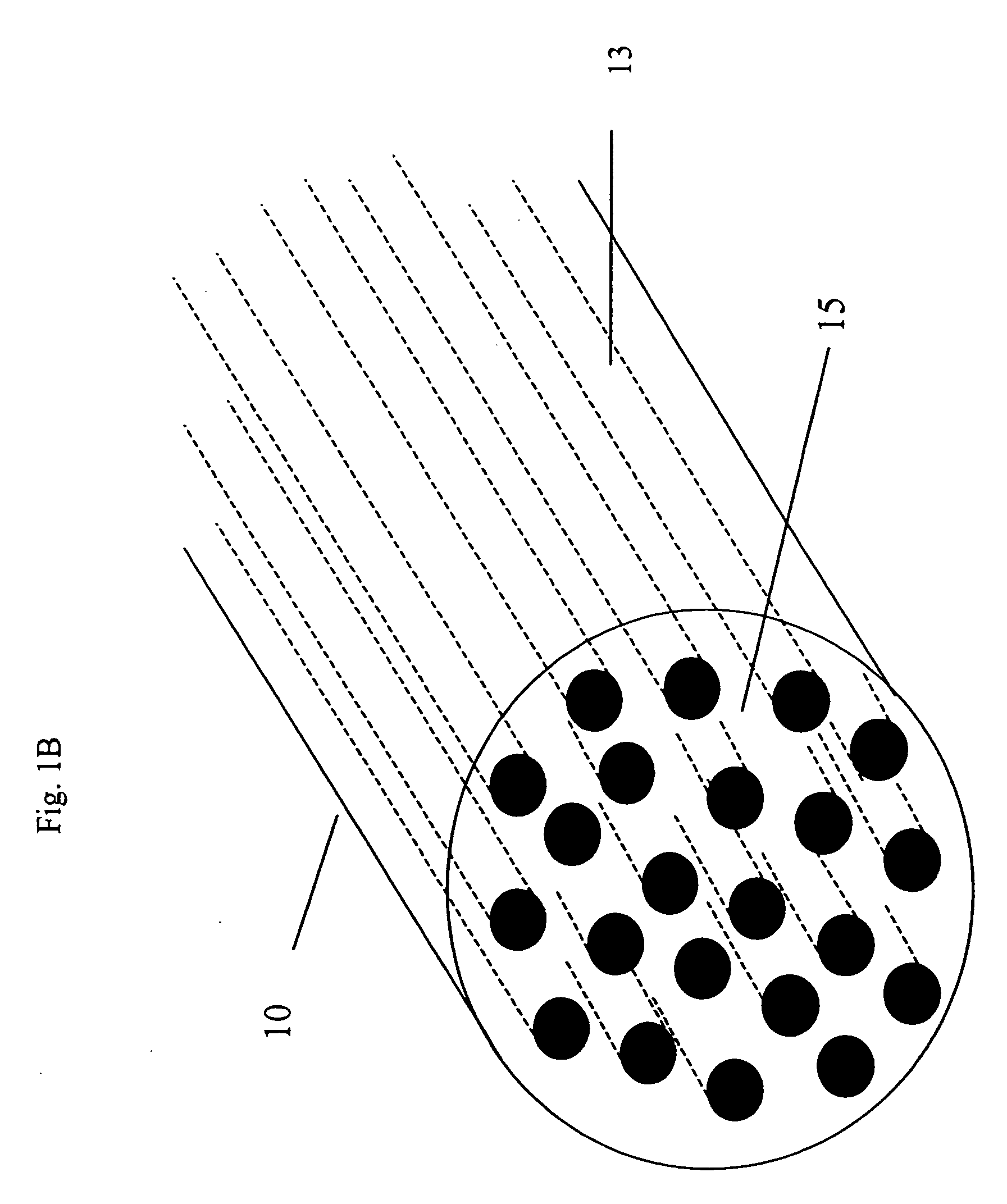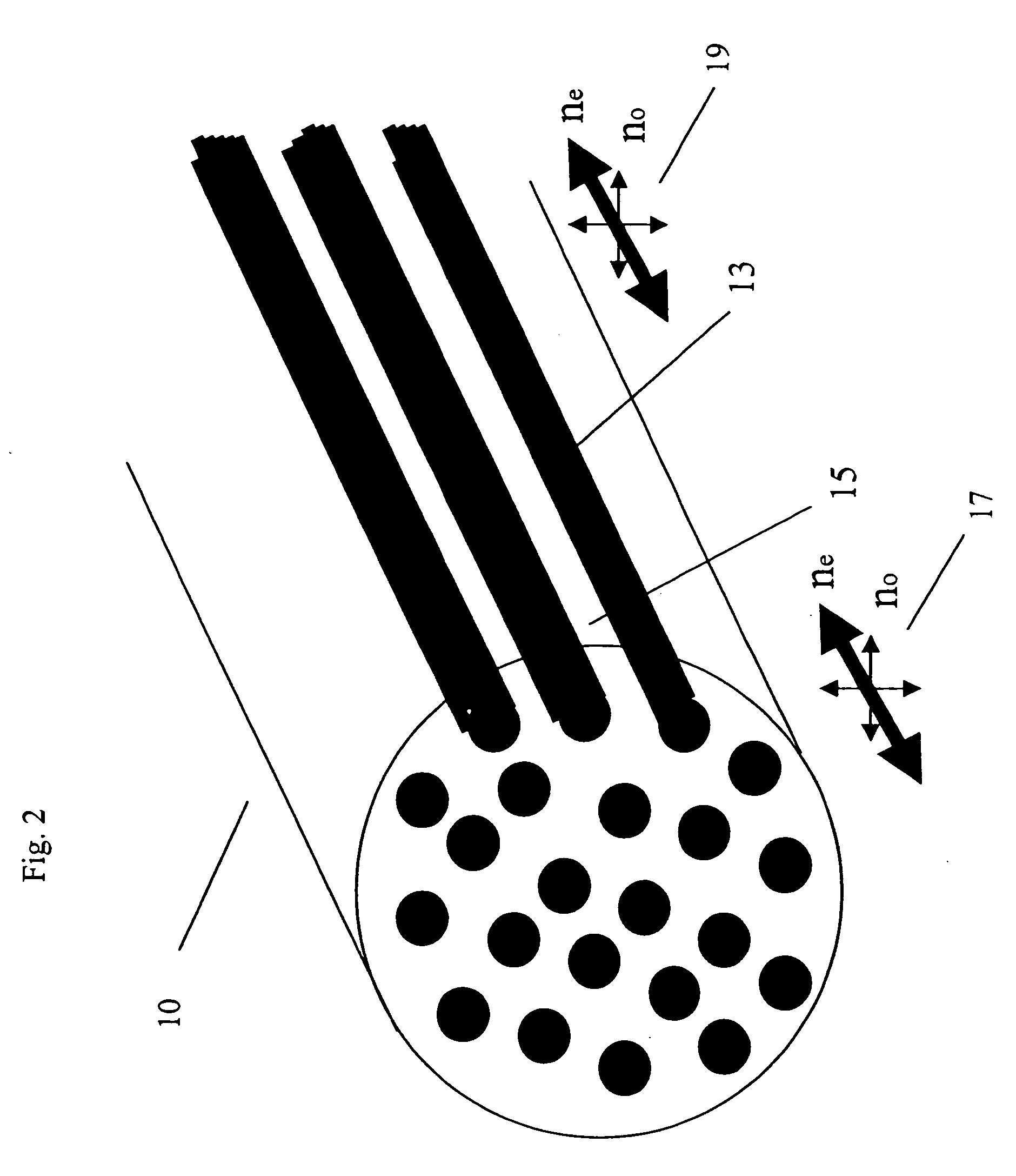However, optical films made from polymers filled with inorganic inclusions suffer from a variety of infirmities.
Consequently, the optical properties of the film decline when stress or strain is applied across the matrix, both because the bond between the matrix and the inclusions is compromised, and because the rigid inorganic inclusions may be fractured.
Furthermore, alignment of inorganic inclusions requires process steps and considerations that complicate manufacturing.
However, optical films employing liquid crystals as the disperse phase are substantially limited in the degree of
refractive index mismatch between the matrix phase and the dispersed phase.
However, due to their
liquid crystal nature, films of this type would suffer from the infirmities of other liquid
crystal materials discussed above.
A
voltage across the electrodes produces an
electric field, which changes the birefringent properties of the liquid
crystal material, resulting in various degrees of mismatch between the refractive indices of the fibers and the liquid
crystal.
However, the requirement of an electric or
magnetic field is inconvenient and undesirable in many applications, particularly those where existing fields might produce interference.
However, the optical properties of microvoided materials are difficult to control because of variations of the geometry of the interfaces, and it is not possible to produce a film axis for which refractive indices are relatively matched, as would be useful for polarization-sensitive optical properties.
Furthermore, the voids in such material can be easily collapsed through
exposure to heat and pressure.
As a result, such films have seen limited use for optical applications where optical
diffusion is desirable.
This reduced
optical efficiency can also lead to performance restrictions under high illumination due to heating or
fading of the light-absorbing mechanisms commonly used in the displays.
Thus, functionality must be compromised to minimize size, weight and cost.
Projection displays are subject to extremely high illumination levels, and both heating and reliability must be managed.
Head mounted displays utilizing polarized light valves are particularly sensitive to power requirements, as the temperature of the display and backlight must be maintained at acceptable levels.
Previous disclosure displays suffer from low efficiency, poor luminance uniformity, insufficient luminance and excessive
power consumption that generates unacceptably high levels of heat in and around the display.
Previous disclosure displays also exhibit a non-optimal environmental range due to dissipation of energy in
temperature sensitive components.
Backlight assemblies are often excessively large in order to improve the uniformity and efficiency of the
system.
Even with this previous disclosure optimization, lamp power levels must be undesirably high to achieve the desired luminance.
When fluorescent lamps are operated at sufficiently high power levels to provide a high degree of brightness for a
cockpit environment, for example, the
excess heat generated may damage the display.
Unfortunately, the
cockpit environment contains
dirt and other impurities that are also carried into the display with the impinging air, if such
forced air is even available.
Presently available LCD displays cannot tolerate the influx of
dirt and are soon too dim and dirty to operate effectively.
Another drawback of increasing the power to a
fluorescent lamp is that the
longevity of the lamp decreases dramatically as ever higher levels of surface luminance are demanded.
The result is that aging is accelerated which may cause abrupt failure in short periods of time when operating limitations are exceeded.
By improving the pass-axis
transmittance (approaching the theoretical limit of 50%), the power requirements have been reduced, but the majority of the
available light is still absorbed, constraining the efficiency and leading to polarizer reliability issues in high
throughput systems as well as potential
image quality concerns.
While somewhat effective, these previous disclosure approaches are very constrained in terms of illumination or viewing angle, with several having significant
wavelength dependence as well.
Many of these add considerable complexity, size or cost to the
projection system, and are impractical on direct view displays.
None of these previous disclosure solutions are readily applicable to high performance direct view systems requiring wide viewing angle performance.
The advantages that can be gained by the approach, as embodied in the previous disclosure, are rather limited.
While this approach has been proposed as a transflective configuration as well, using the
wire grid polarizer instead of the partially-silvered mirror or comparable element, the previous disclosure does not provide means for maintaining
high contrast over normal lighting configurations for transflective displays.
As a result, there will be a sizable range of
ambient lighting conditions in which the two sources of light will cancel each other and the display will be unreadable.
A further
disadvantage of the previous disclosure is that achieving a diffusely reflective polarizer in this manner is not at all straightforward, and hence the reflective mode is most applicable to specular, projection type systems.
The manufacturability and optical performance of such a reflective polarizer utilizing even the smallest typical monolithic birefringent fibers, however, is not sufficient enough to enable such a diffuse reflective polarizer to be cost effective.
 Login to View More
Login to View More 


